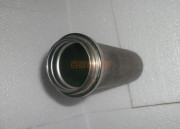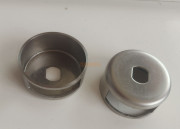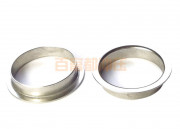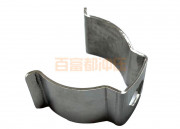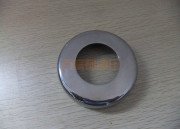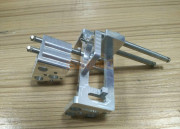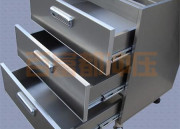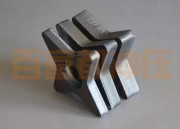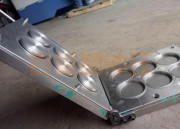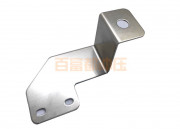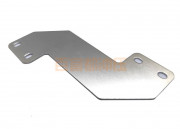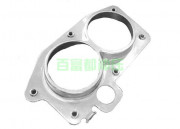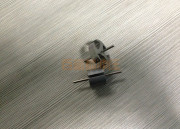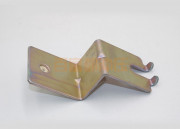Posted at 01/09/2022 By : deep drawing Categories : Blog,Industry Comment: Comments Off on What are the practical mold processing methods and skills? 1. Information about the waste situation
The nature of the waste is the inverse image of the forming hole, that is, the same part is in the opposite position. By checking the scrap, it can be judged whether the upper and lower die gaps are correct. If the gap is too large, the scrap will exhibit rough, undulating fracture surfaces and a narrow bright band. The larger the gap, the larger the angle between the fracture surface and the bright band area. If the gap is too small, the scrap will exhibit small angled fracture surfaces and wide bright band areas.
Excessive clearance creates holes with large curls and edge tears, leaving the profile slightly protruding and the edges thinner. A gap that is too small will result in slight hemming of the tape and large angular tears, resulting in a cross-section that is more or less perpendicular to the surface of the material.
The ideal scrap should have a reasonable collapse angle and a uniform bright band. This keeps the punching force low and creates a neat round hole without burrs. From this perspective, increasing die life by increasing clearance comes at the expense of finished hole quality.
Second, the choice of mold clearance
The gap of the die is related to the type and thickness of the material being stamped. Unreasonable clearance can cause the following problems:
1. The gap is too large, the burr of the stamping workpiece is relatively large, and the stamping quality is poor. If the gap is too small, although the punching quality is good, the die wear is serious, which greatly reduces the service life of the die and easily causes the punch to break.
2. If the gap is too large or too small, it is easy to cause adhesion on the punch material, which will cause the material to taper during punching. If the gap is too small, it is easy to form a vacuum between the bottom surface of the punch and the plate, causing the waste to bounce back.
3. Reasonable clearance can prolong the life of the mold, the discharge effect is good, the burrs and flanging are reduced, the plate is kept clean, the hole diameter is consistent and the plate surface will not be scratched, the number of sharpening is reduced, the plate is kept straight, and the punching positioning is accurate. .
3. How to improve the service life of the mold
For users, increasing the service life of the mold can greatly reduce the stamping cost. The factors that affect the service life of the mold are as follows:
1. The type and thickness of the material.
2. Whether to choose a reasonable lower die gap.
3. The structure of the mold.
4. Whether the material is well lubricated during stamping.
5. Whether the mold has undergone special surface treatment.
6, such as titanium plating, titanium carbonitride.
7. The neutrality of the upper and lower turrets.
8. Adjust the rational use of gaskets.
9. Is it appropriate to use the beveled mold?
10. Whether the die base of the machine tool is worn.
Fourth, the problems that should be paid attention to when punching special size holes
1. Special punch for punching holes with small aperture in the range of φ0.8-φ1.6.
2. When punching thick plates, use a die one size larger than the hole diameter. NOTE: At this time, if a normal size die is used, the punch threads will be damaged.
3. The ratio of the small width to the length of the punch edge part should generally not be less than 1:10.
Example 3: For a rectangular punch, when the length of the cutting edge is 80mm, the width of the cutting edge should be ≥8mm.
5. Sharpening of the mold
1. The importance of mold sharpening
Regular sharpening of the die is key to ensuring consistent punch quality. Regular sharpening of the mold can not only improve the service life of the mold, but also improve the service life of the machine. But you must master the right sharpening timing.
2. The specific characteristics of the mold that needs to be sharpened
For die sharpening, there is no strict number of blows to determine if sharpening is required. It mainly depends on the sharpness of the cutting edge. It is mainly determined by the following three factors:
1. Check the fillet of the cutting edge. If the fillet radius reaches R0.1mm (the maximum R value should not exceed 0.25mm), it needs to be sharpened.
2. Check the punching quality, is there a large burr?
3. Determine whether sharpening is required according to the noise of machine stamping. If there is abnormal noise when punching the same pair of molds, it means that the punch is dull and needs to be sharpened.
Note: If the edge of the cutting edge is rounded or the rear of the cutting edge is rough, sharpening should also be considered.
3. The method of sharpening
There are many ways to sharpen the mold, which can be realized by a special sharpening machine or a surface grinder. The punch and die grinding frequency is generally 4:1. Please adjust the mold height after sharpening.
1. Harm of incorrect sharpening method: Incorrect sharpening will aggravate the rapid destruction of the cutting edge, resulting in a greatly reduced number of blows per sharpening.
2. The benefits of the correct sharpening method: Regular sharpening of the mold can keep the quality and precision of the stamping stable. The die edge is damaged more slowly and has a longer life.
4. Sharpening rules
The following factors should be considered when sharpening:
(1) The fillet of the cutting edge depends on the sharpness of the cutting edge when the size is R0.1-0.25mm.
(2) The surface of the grinding wheel should be clean.
(3) It is recommended to use loose, coarse-grained and soft grinding wheels. Such as WA46KV
(4) The amount of grinding each time (the amount of knife cutting) shall not exceed 0.013mm. Excessive grinding will lead to overheating of the surface of the mold, which is equivalent to annealing treatment, and the mold will become soft, which greatly reduces the service life of the mold.
(5) Sufficient coolant must be added when sharpening.
(6) When grinding, the punch and the lower die should be fixed and stable, and a special fixture should be used.
(7) The amount of sharpening of the mold is certain. If this value is reached, the punch will be scrapped. If you continue to use it, it is easy to cause damage to the mold and the machine, which is not worth the loss.
(8) After sharpening, the edges should be treated with whetstone to remove excessively sharp ridges.
(9) After sharpening, it should be cleaned, demagnetized and oiled.
Note: The amount of die sharpening mainly depends on the thickness of the stamped sheet.
Six, the punch should pay attention before using
1. Storage
(1) Wipe the inside and outside of the upper die sleeve with a clean rag.
(2) Be careful not to scratch or dent when storing.
(3), apply oil to prevent rust.
2. Preparation before use
(1) Thoroughly clean the upper mold sleeve before use.
(2) Check the surface for scratches and dents. If there is, remove it with a whetstone.
(3) Apply oil inside and outside.
3. Matters needing attention when installing the punch on the upper die sleeve
(1) Clean the punch and oil its shank.
(2) About the large-station mold
Have you all understood the above practical mold processing skills? For more information, please follow our website.
Read More →

